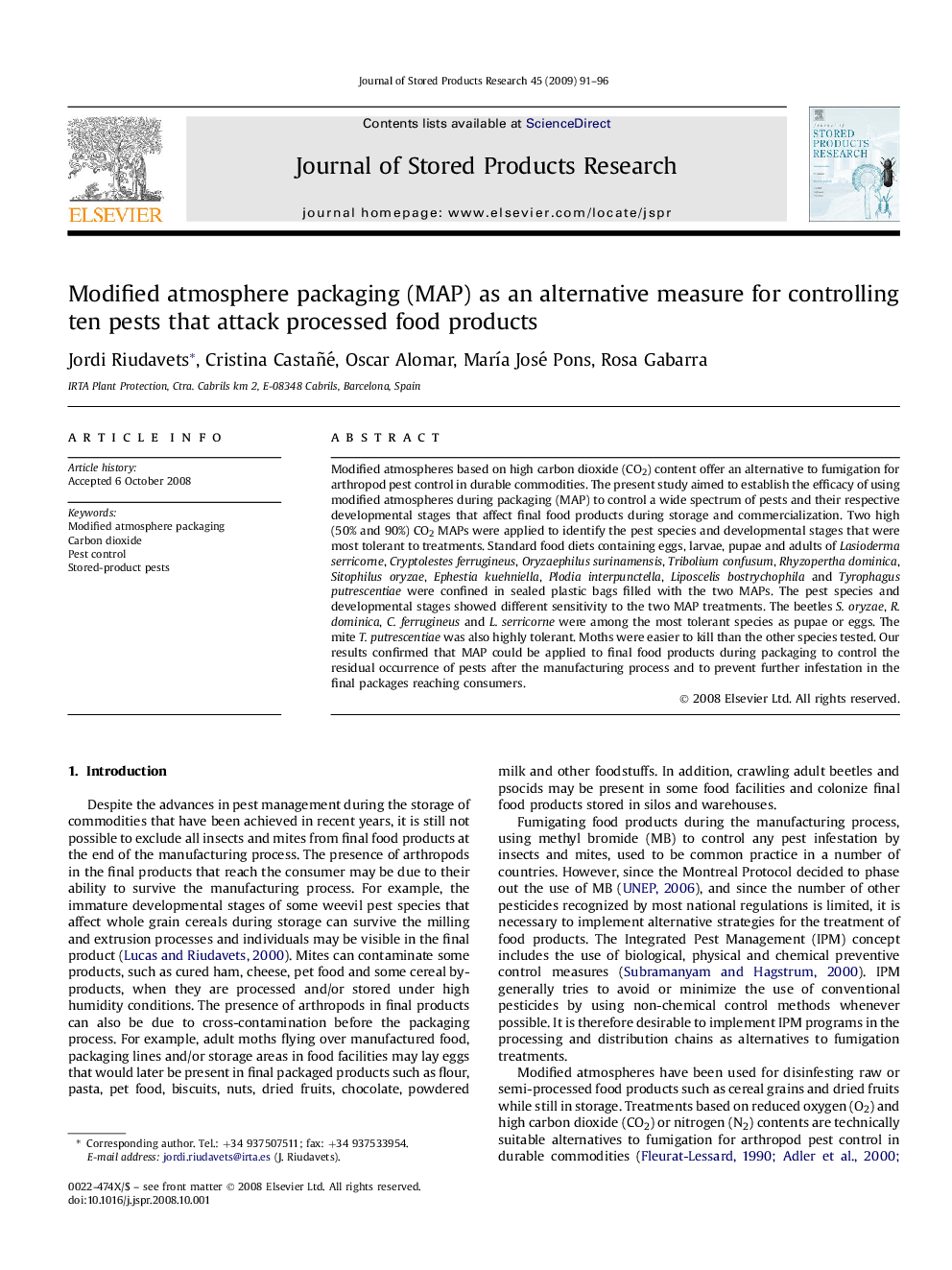| Article ID | Journal | Published Year | Pages | File Type |
|---|---|---|---|---|
| 4517383 | Journal of Stored Products Research | 2009 | 6 Pages |
Modified atmospheres based on high carbon dioxide (CO2) content offer an alternative to fumigation for arthropod pest control in durable commodities. The present study aimed to establish the efficacy of using modified atmospheres during packaging (MAP) to control a wide spectrum of pests and their respective developmental stages that affect final food products during storage and commercialization. Two high (50% and 90%) CO2 MAPs were applied to identify the pest species and developmental stages that were most tolerant to treatments. Standard food diets containing eggs, larvae, pupae and adults of Lasioderma serricorne, Cryptolestes ferrugineus, Oryzaephilus surinamensis, Tribolium confusum, Rhyzopertha dominica, Sitophilus oryzae, Ephestia kuehniella, Plodia interpunctella, Liposcelis bostrychophila and Tyrophagus putrescentiae were confined in sealed plastic bags filled with the two MAPs. The pest species and developmental stages showed different sensitivity to the two MAP treatments. The beetles S. oryzae, R. dominica, C. ferrugineus and L. serricorne were among the most tolerant species as pupae or eggs. The mite T. putrescentiae was also highly tolerant. Moths were easier to kill than the other species tested. Our results confirmed that MAP could be applied to final food products during packaging to control the residual occurrence of pests after the manufacturing process and to prevent further infestation in the final packages reaching consumers.
